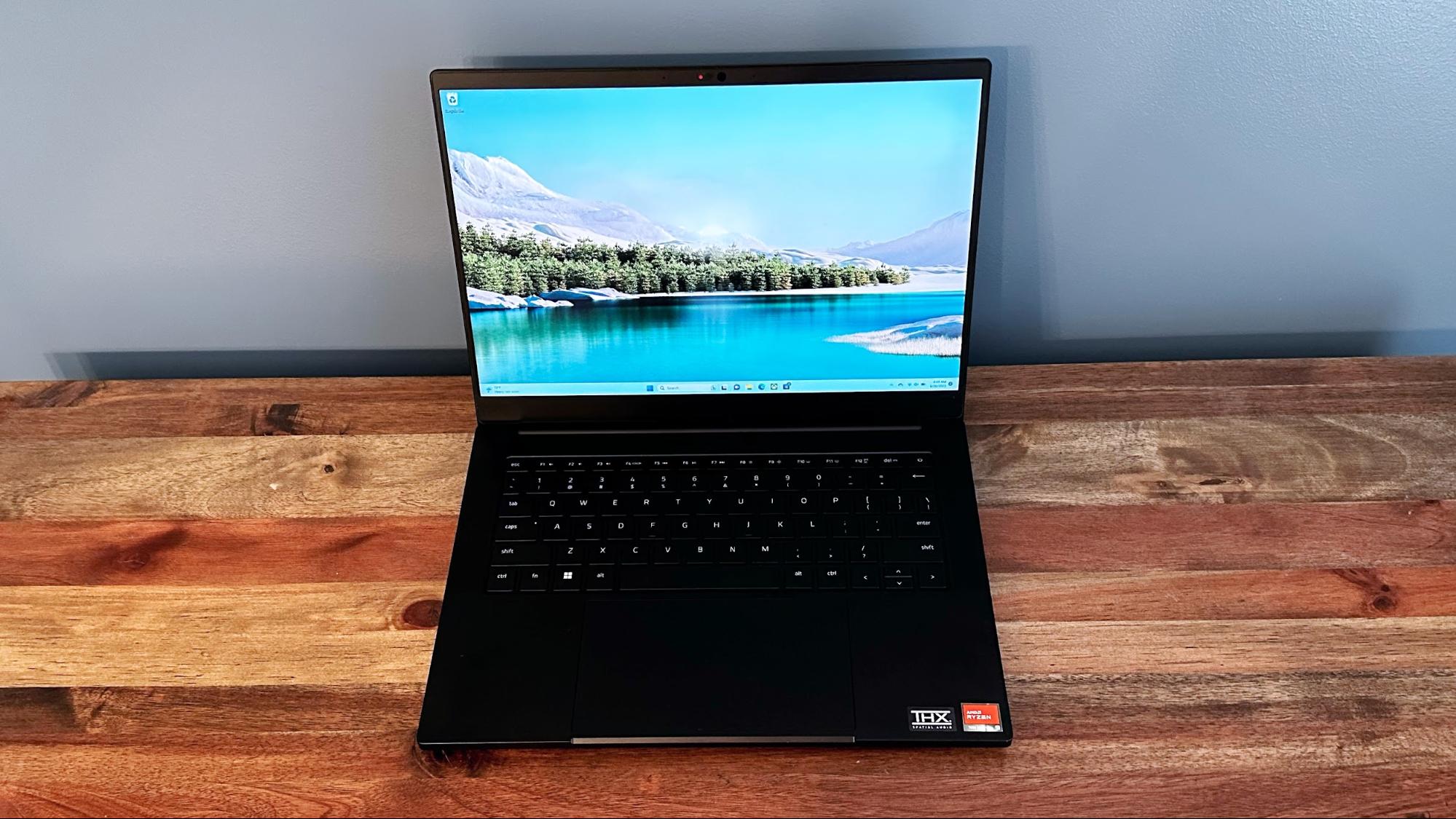
Razer often bucks the trends set by some of the best gaming laptops. As bigger has often been considered better in this space, Razer has stuck with the 14-inch display for the Blade 14 to focus on portability. However, this smaller form factor still incorporates a potent AMD Ryzen 9 7940HS “Phoenix” processor and an Nvidia GeForce RTX 4070 GPU.
All this power resides inside a chassis that weighs just a smidge over 4 pounds. Playing up its gaming roots, the 16:10 aspect ratio QHD+ (2560 x 1600) display maxes out at 240 Hz, and there’s RGB lighting for the keyboard and the Razer logo on the lid. Throw in a massive touchpad, plentiful ports, and great battery life and you have what looks to be a winning combination for a highly portable gaming laptop.
However, a laptop can’t be everything to everybody, so some sacrifices had to be made. The Blade 14 has a few cracks in its armor, namely surrounding fan noise and price, but its performance ranks among the best in this gathered field of laptops.
Razer Blade 14 Specs
Design of the Razer Blade 14
The design of the Razer Blade 14 hasn’t changed much over the years. It’d be easy to mistake this year’s model for the one we reviewed back in 2021 regarding its exterior. The compact laptop exudes quality with tight tolerances around the chassis and zero flex.
The display hinge is particularly noteworthy for its strength, with zero “wobble.” With many laptops, the display will wobble back and forth if you move it around or type at a furious pace. With the Blade 14, the hinge is so stiff that it doesn’t move at all once you’ve adjusted the angle to your liking. That sense of quality and solidity extends to tasks as simple as opening the lid. Some laptops are so lightweight or ill-balanced that lifting the lid while the computer is sitting on a desk causes the chassis to lift slightly or requires two hands. With the Blade 14, lifting the lid requires just your thumb, and the chassis remains planted.

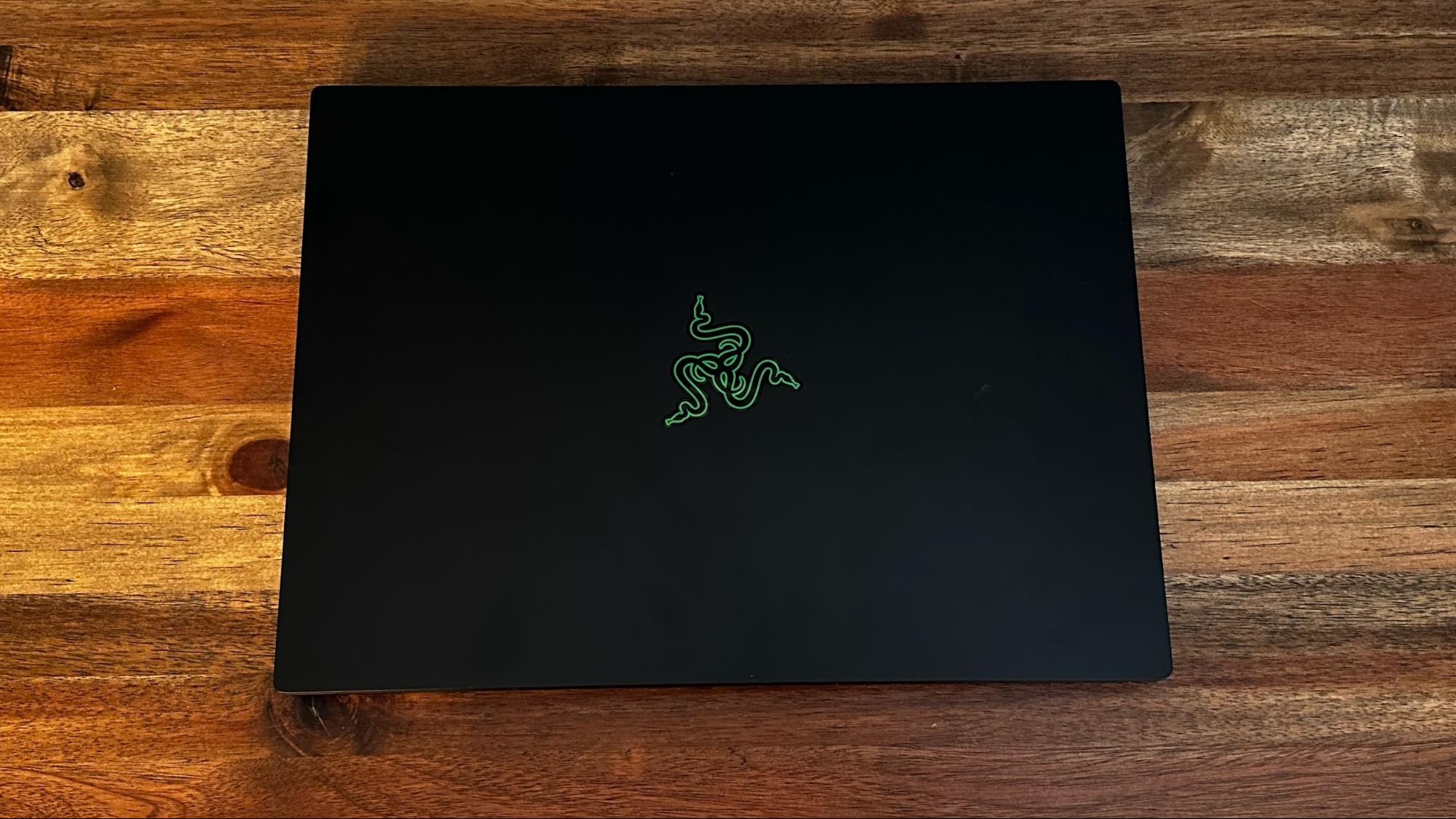
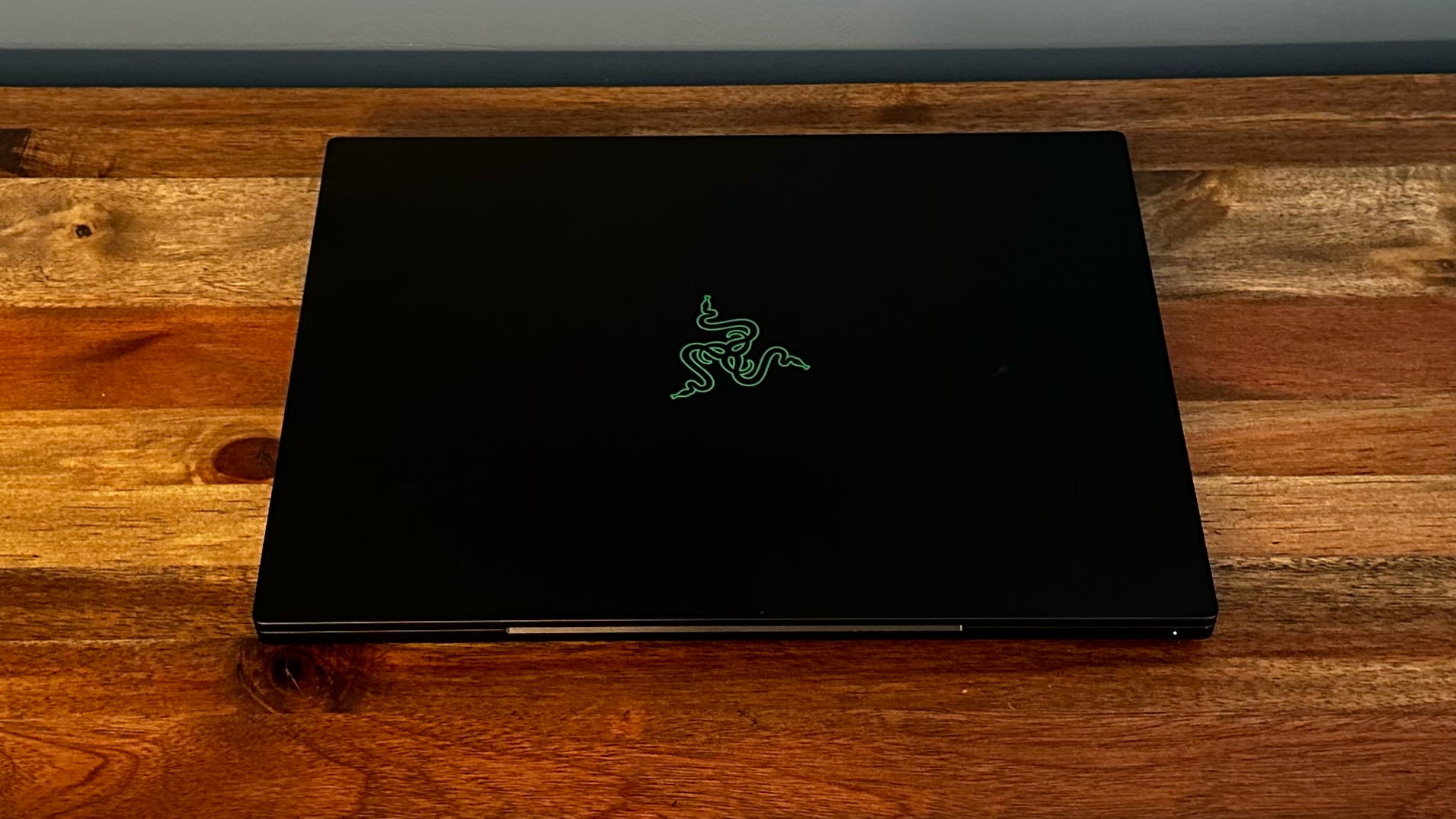
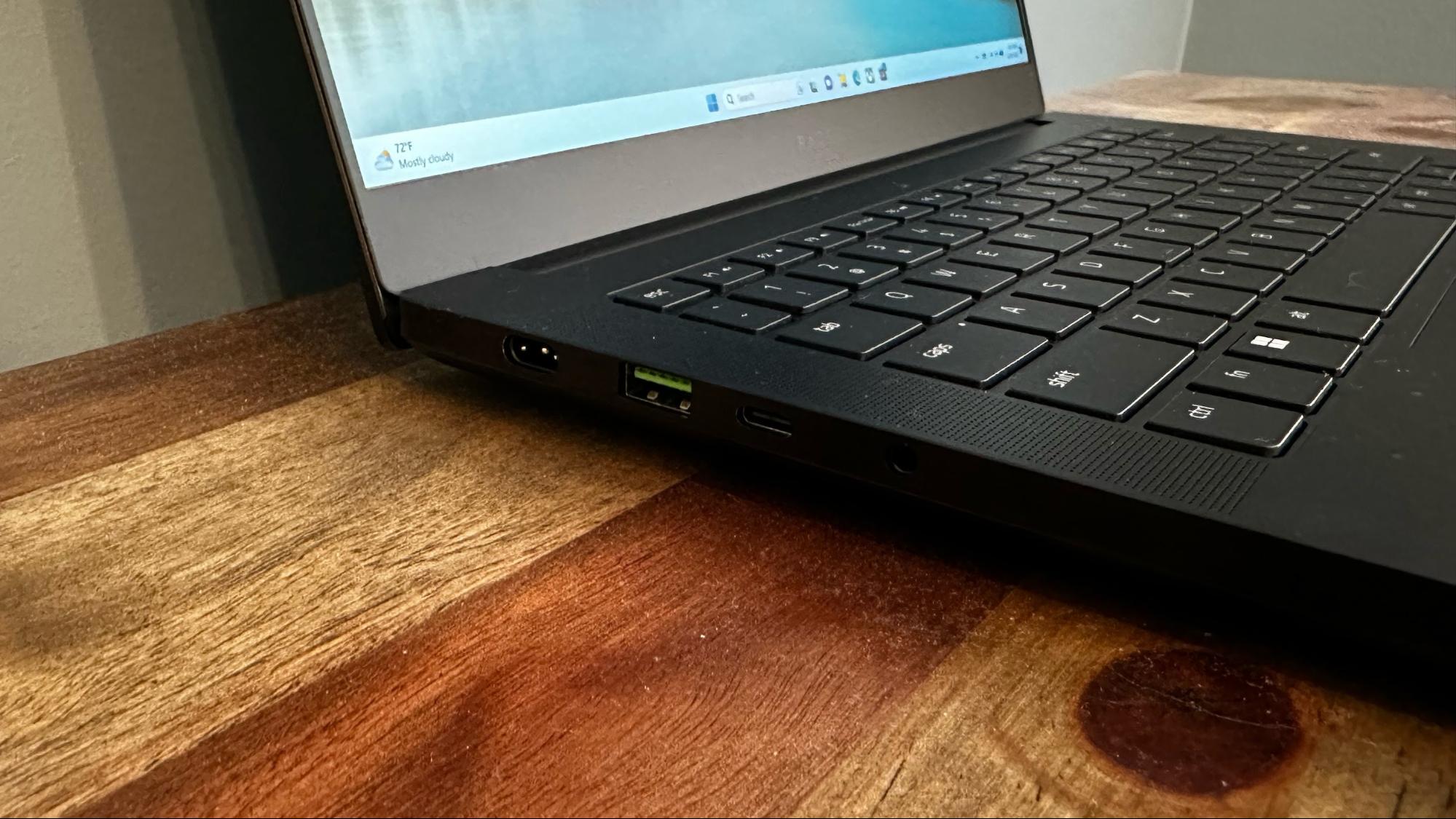
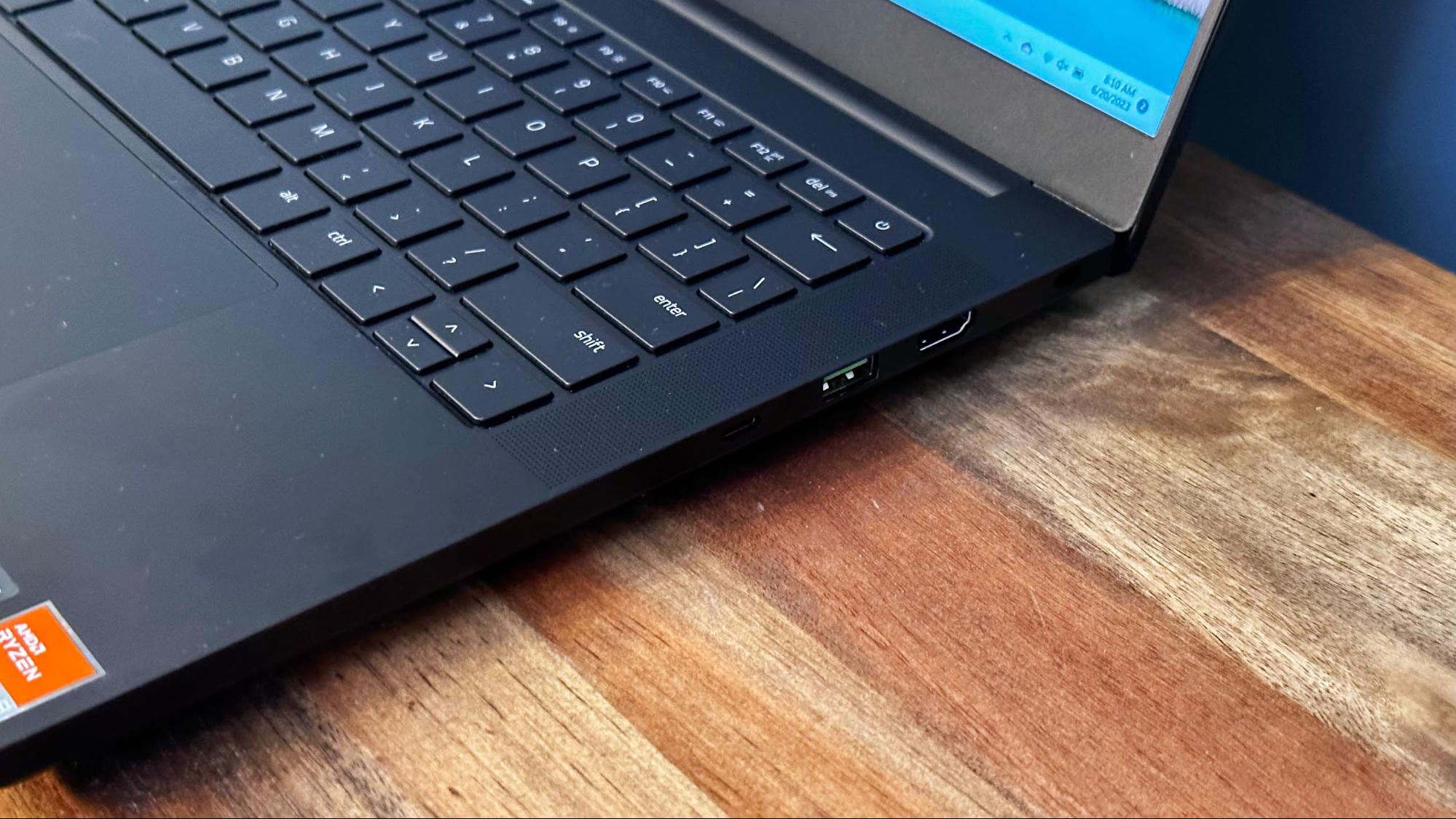
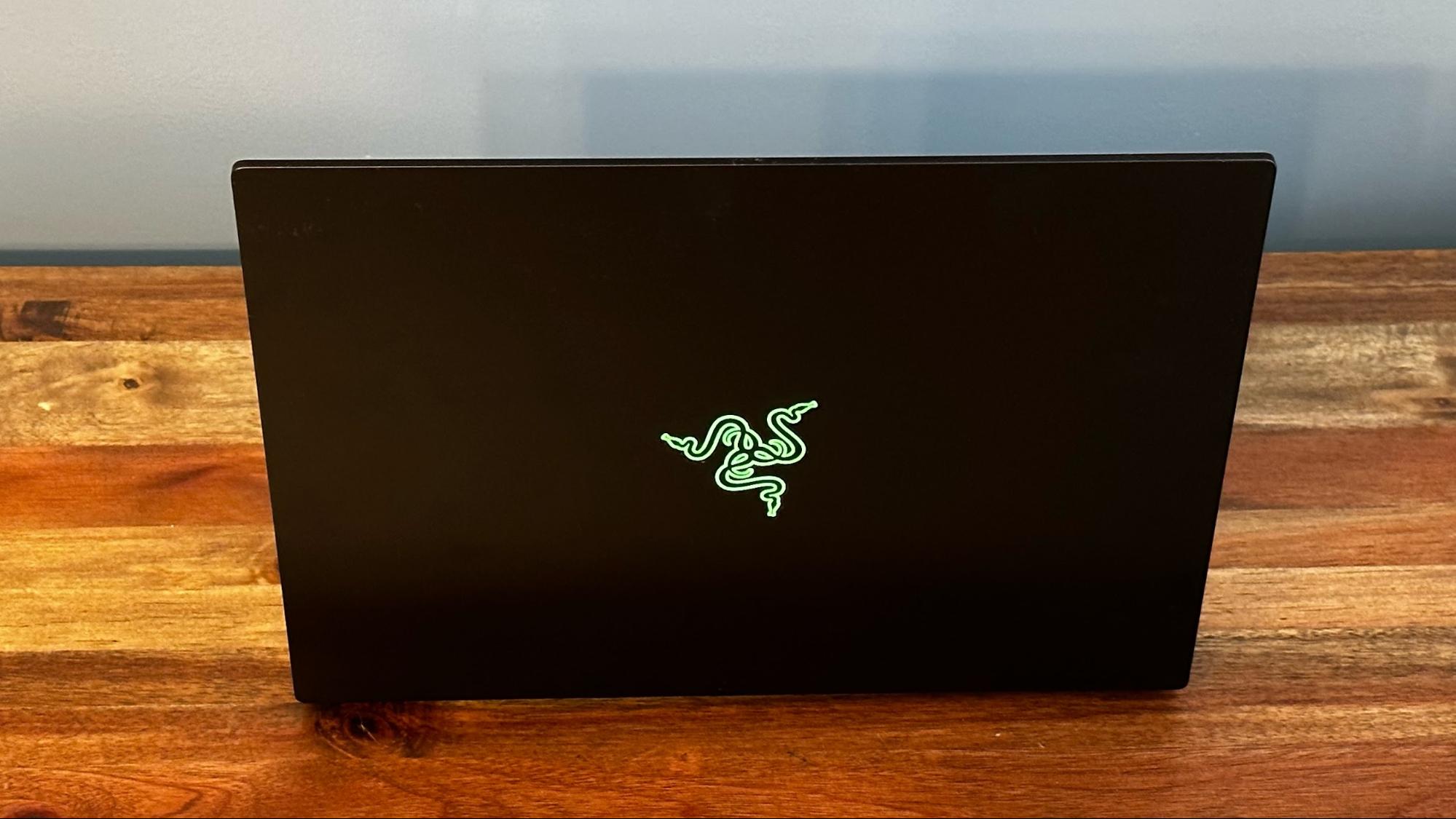


The design of the keyboard deck is reminiscent of Apple’s 14-inch MacBook Pro, complete with the tiny, precision perforations for the speakers. On the right side of the Blade 14, you’ll find one USB 3.2 (Type-A), one USB 4 (Type-C) and an HDMI 2.1 port. The left side is home to one USB 3.2 (Type-A), one USB 4 (Type-C), a 3.5 mm headphone jack and a proprietary connector for power.
The Blade 14 measures 12.23 x 8.97 0.70 inches and weighs just 4.05 pounds. That’s ever so slightly larger and heavier than the last Blade 14 we tested in 2021. The other laptops in this field that we've tested witih similar gaming performance (Gigabyte Aorus 15X, Asus ROG Strix G16 and Razer Blade 16) all feature 15.6- or 16-inch displays and are a pound or more heavier than the Blade 14.
Gaming Performance on the Razer Blade 14
The Razer Blade 14 uses an AMD Ryzen 9 7940HS processor, which comes in an 8-core/16-thread configuration. The base clock is 4.0 GHz, while the maximum boost clock is 5.2G Hz. Coming alongside the CPU is an Nvidia GeForce RTX 4070 GPU (1,410 MHz boost clock, 8GB GDDR6, 100W TDP) and 16GB of DDR5-5600 memory (2 x 8GB).
I played Cyberpunk 2077 on high settings with ray tracing enabled, DLSS Balanced, and DLSS frame generation enabled, averaging 70 frame per second at 1600p. When I dropped the resolution to 1080p with the same graphical settings, performance increased to around 110 fps. I averaged about 130 fps DLSS Quality without ray tracing at 1080p and 90 fps at 1600p.
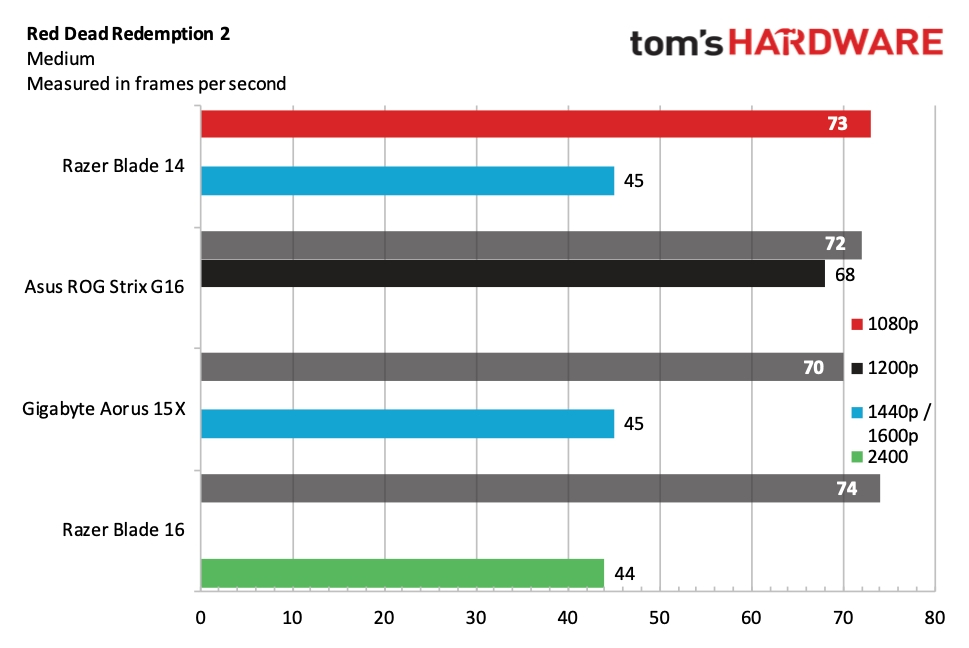
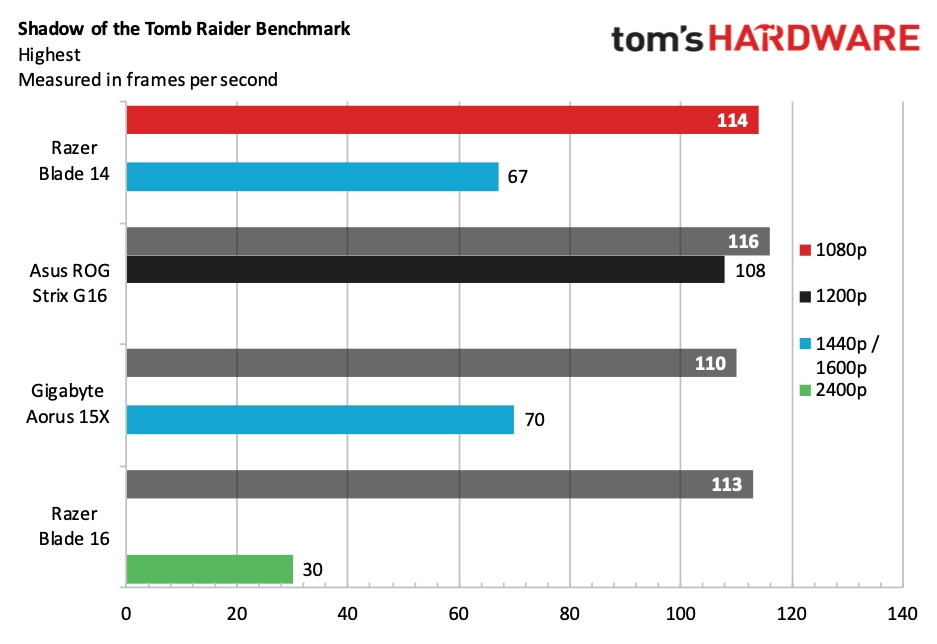

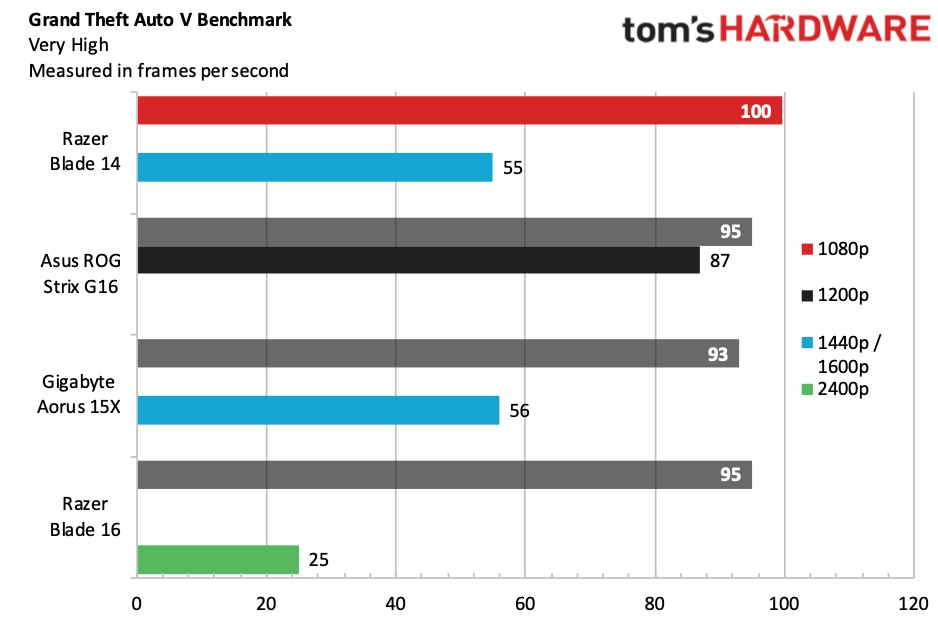

The Blade 14 gave us at least 70 fps across the board at 1080p, although stepping up to 1600p resulted in a significant (but expected) drop in performance. We should note that given the wide disparities in resolutions between all four laptops, we’ll note our observations on 1080p performance for all systems. However, 1600p/1440p comments will be limited to the Blade 14 and Gigabyte Aorus 15X.
In our Shadow of the Tomb Raider (Highest Settings) benchmark running at 1080p, the Blade 14 took second place in the rankings at 114 fps behind the Aorus ROG Strix G16 (Core i9-13980HX, RTX 4070, 1200p) at 116 fps. The Blade 16 (Core i9-13950HX, RTX 4070, 2400p) and Gigabyte Aorus 15X (Core i9-13900HX, RTX 4070, 1440p) weren’t far behind at 113 fps and 110 fps, respectively. Bumping the resolution to 1600p saw the Blade 14 fall to 67 fps, putting it on nearly even footing with the Aorus 15X (70 fps) running at 1440p.
Moving on to Grand Theft Auto V (Very High Settings), the ROG Strix G16 secured first place at 1080p with 100 fps, nudging past the ROG Strix G16 and Razer Blade 15 at 95 fps. The Aorus 15X pulled in last with a still respectable 93 fps. Switching to 1600p resolution, the Blade 14 witnessed a 45 percent drop in performance to 55 ps. As with the Shadow benchmark, the Aorus 15X running at 1440p was in the same ballpark at 56 fps.
Switching gears to Far Cry 6 (Ultra Settings), the Blade 14 faltered a little at 1080p compared to its peers. The Blade 14 took top honors this time around at 102 fps and was followed by the ROG Strix G16 at 98 fps. The Blade 14 settled for third place at 85 fps, while the Aorus 15X limped across the finish line at 75 fps. At 1600p resolution, the Blade 14 stepped down to 68 fps, mirroring the Aorus 15X’s 67 fps at 1440p.
Red Dead Redemption 2 (Medium Settings) saw the laptops closely clustered around the 70 fps mark at 1080p resolution. The Blade 14 hit 74 fps and was followed by the Blade 14 at 73 fps, the ROG Strix G16 at 72 fps and the Aorus 15X at 70 fps. When we set the Blade 14’s resolution to 1600p, performance dropped to 45 fps, equaling the Aorus 15X’s performance at 1440p.
As for Borderlands 3 (Badass Settings), this was another instance where the laptops were grouped closely together at 1080p resolution. The Blade 16 hit 102 fps and was followed by the ROG Strix G16 at 100 fps. The Blade 14 and Aorus 15X tied at 98 fps. Increasing the resolution saw the Blade 14 fall to 64 fps, while the Aorus 15X squeezed in a few more frames to 67 fps at 1440p.
We ran the Metro Exodus benchmark (RTX) through 15 loops at 1600p resolution to round out our benchmarks. The benchmark ran at an average 61.44 fps (consistently ranging between 61.27 to 61.55 fps). During the run, the Ryzen 9 7940HS averaged 3.863GHz at 81.4 degrees Celsius (178.52 degrees Fahrenheit). The GeForce RTX 4070 GPU ran at an average of 2.06 GHz and measured 76 C (168.8 F).
Productivity Performance on the Razer Blade 14
The Blade 14 features a Ryzen 9 7940HS processor, 16GB DDR5-5600 memory and 1TB SSD.
In our Geekbench 5 benchmark, the Blade 14 was last for single-core performance. It lost out by a single point to the Aorus 15X (which is effectively in the margin of error). However, the Blade 14 took a severe walloping in the multi-core benchmark, where it mustered a score of 11,121, which was no match for the Raptor Lake competition. The third-place Aorus 15X scored 18,129, while the Blade 16 bested all challengers at 20,497.
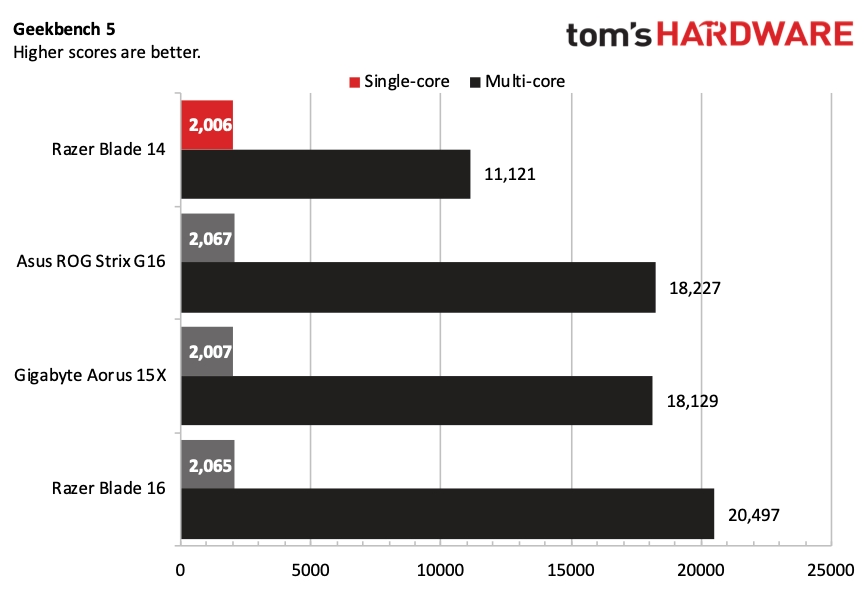
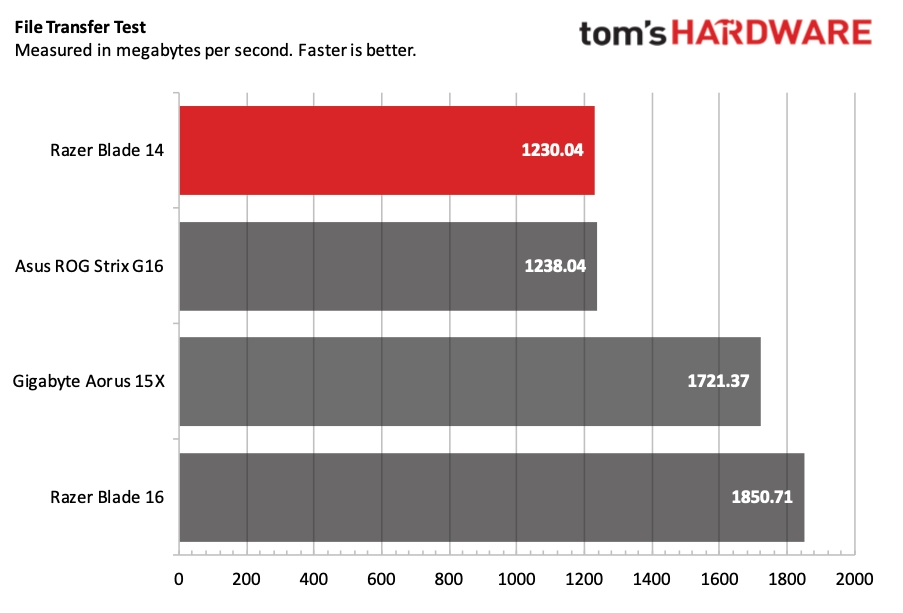

The file transfer test also saw the Blade 14 come in last place by a small margin, hitting 1,230.04 MBps while transferring 25GB of files. The Blade 16 once again came in first place at 1,850.71 MBps.
In our Handbrake transcoding test, the Blade 14 slipped into second place, finishing in four minutes and 45 seconds compared to four minutes and eight seconds for the first-place Aorus 15X. The ROG Strix G16 and Blade 16 finished the test in just over five minutes.
Display on the Razer Blade 14
The Blade 14 is no slouch in the display department, as expected, with an as-tested price of $2,699. The 14-inch IPS display has a QHD+ (2560 x 1600) resolution with a maximum refresh rate of 240 Hz. AMD FreeSync Premium is supported via the Radeon 780M GPU integrated into the CPU.
Although the display is a bit on the smaller side for a gaming laptop (15.6 inches is the most popular size, and many are moving to 16 inches), I found the 1600p resolution made the text look super sharp on the display. Coupled with the matte, anti-glare coating, the display was easily readable indoors and outdoors.
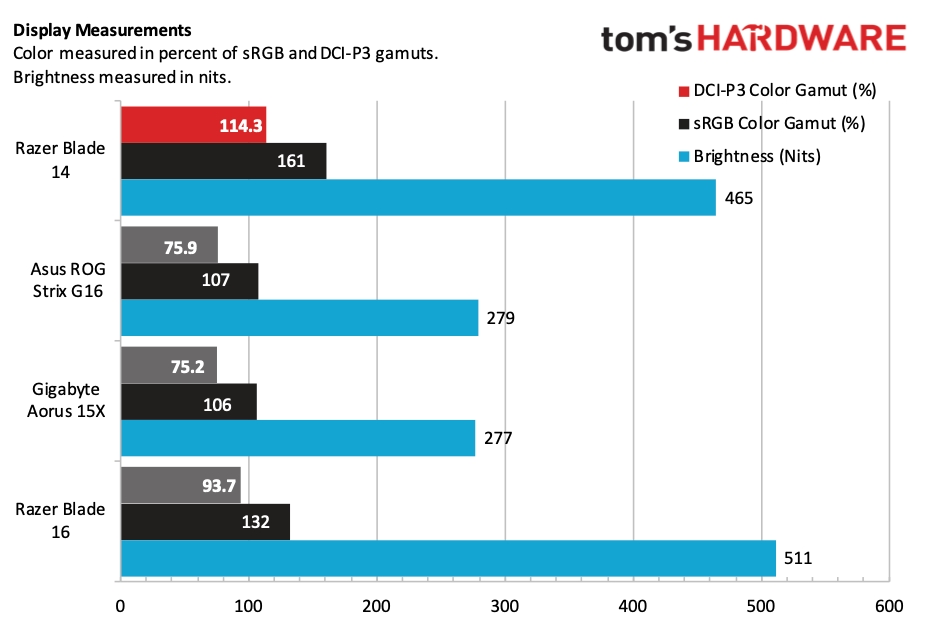
Our light meter showed that the Blade 14’s display could get incredibly bright, hitting a maximum of 465 nits. This was second only to its Blade 16 sibling in this grouping, which achieved 511 nits. The superlatives didn’t end there, though; the Blade 14 covered 114.3 percent of the DCI-P3 color space and 161 percent of sRGB. The Blade 16 was the next-closest competitor, but its colorimeter results fell well short of its smaller sibling at 93.7 and 132 percent, respectively.
In real-world testing, the display looked fantastic when playing Cyberpunk 2077. I like to play with all the goodies enabled, and with details cranked to Ultra with ray tracing enabled, the richness of the gaming environment came to life. From the soft, neon glow of the lights and signs in bars to the reflections seen on vehicles passing by in the daytime and at night, Night City can truly shine on this display.
It was a similar experience with Avatar: Way of Water, which I watched on Disney Plus. The expansive aquatic backdrops' vibrant greens and cooling blues were a sight to behold. As someone who was blown away by the original Avatar when seeing it on the big screen when it debuted over a decade ago, seeing Way of Water showed just how far CGI has advanced during that time. Even on the smaller screen of the Blade 14, Pandora looked lush and teeming with life.
Keyboard and Touchpad on the Razer Blade 14
The keyboard feels great under my fingers, with a nice spring-back after pressing a key (Razer says there’s 1 mm of key travel). There’s minimal noise when typing furiously on the keyboard, although the spacebar definitely makes itself audibly known.
The 14-inch chassis leaves less room for an expansive keyboard, although I had no trouble adjusting to its size. Of course, there’s no room for a number pad off the right side of the keyboard, although folks looking for laptops in this size class likely aren’t expecting one anyway. Razer could have gotten away with including a larger keyboard by repositioning the speakers, which take up a significant amount of space.

The Microsoft Precision touchpad is made of clickable glass, and takes up roughly half of the available palm rest space below the keyboard (it measures 5.9 x 3.4 inches).
Razer's Synapse software is installed to give you complete control over the keyboard. Not only can you reprogram most individual keys, but you also have per-key control over RGB lighting. You can choose your own custom lighting scheme, or choose from several preset options. I personally settled on “Breathing” as my favorite RGB scheme.
I use keyhero.com to test my typing speed with various keyboards. With the Blade 14, I achieved 90 words per minute with 94 percent accuracy. For comparison, I hit 85 wpm with 94 percent accuracy on the Lenovo Legion Pro 5i (Gen 8).
Audio on the Razer Blade 14
The Blade 14 features stereo speakers, which are adequate in games and other multimedia content. You can manually tweak the audio settings using the THX Spatial Audio app, but there are also EQ presets for Music, Games, Cinema, and Video. You can also use the app to turn on THX Spatial Audio, which provides a virtual surround sound experience.
I tried THX Spatial Audio in Borderlands 3, Cyberpunk 2077 and Overwatch 2. However, I didn’t notice enough difference between on and off for it to matter much; I just decided to leave it off after my initial tests. The speakers got plenty loud and were powerful enough to mostly drown out the fan noise.
There isn’t a lot of bass from the speakers, and they still sound a bit tinny (which was also one of our complaints with the 2021 version of the Blade 14). Explosions fell flat in Overwatch 2 and bass-heavy tracks like Tupac and Dr. Dre’s “California Love” sounded like they were recorded in a dilapidated bathroom. However, they are serviceable for games, music and movies. But we’d suggest looking at some of the best gaming headsets if you want the best sound experience.
Upgradeability on the Razer Blade 14
The Blade 14’s internals are accessible after removing eight Torx screws from the bottom panel. With the screws removed, you slide the panel forward to release it from the rear hinge area, and it pops off.
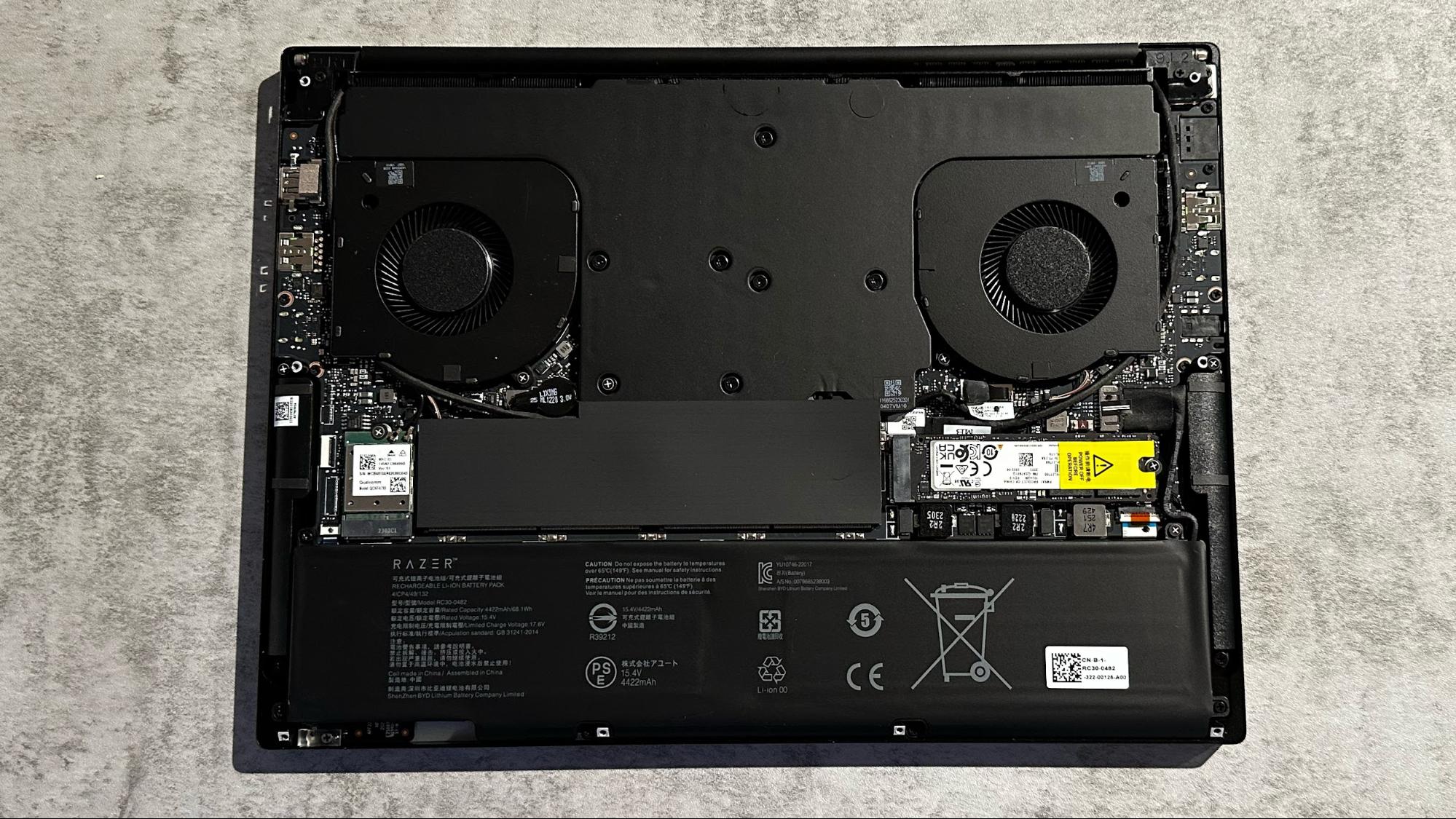
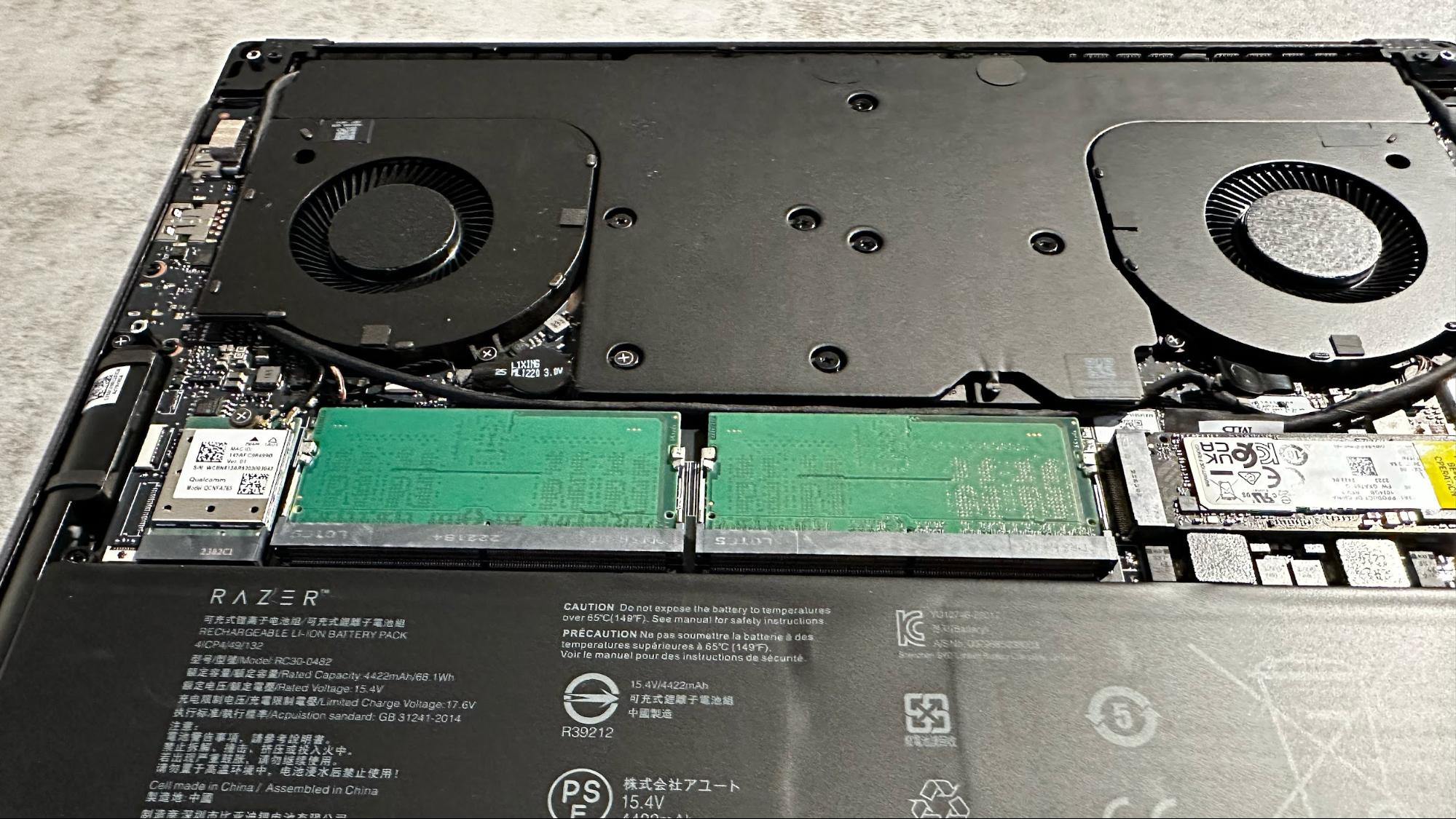
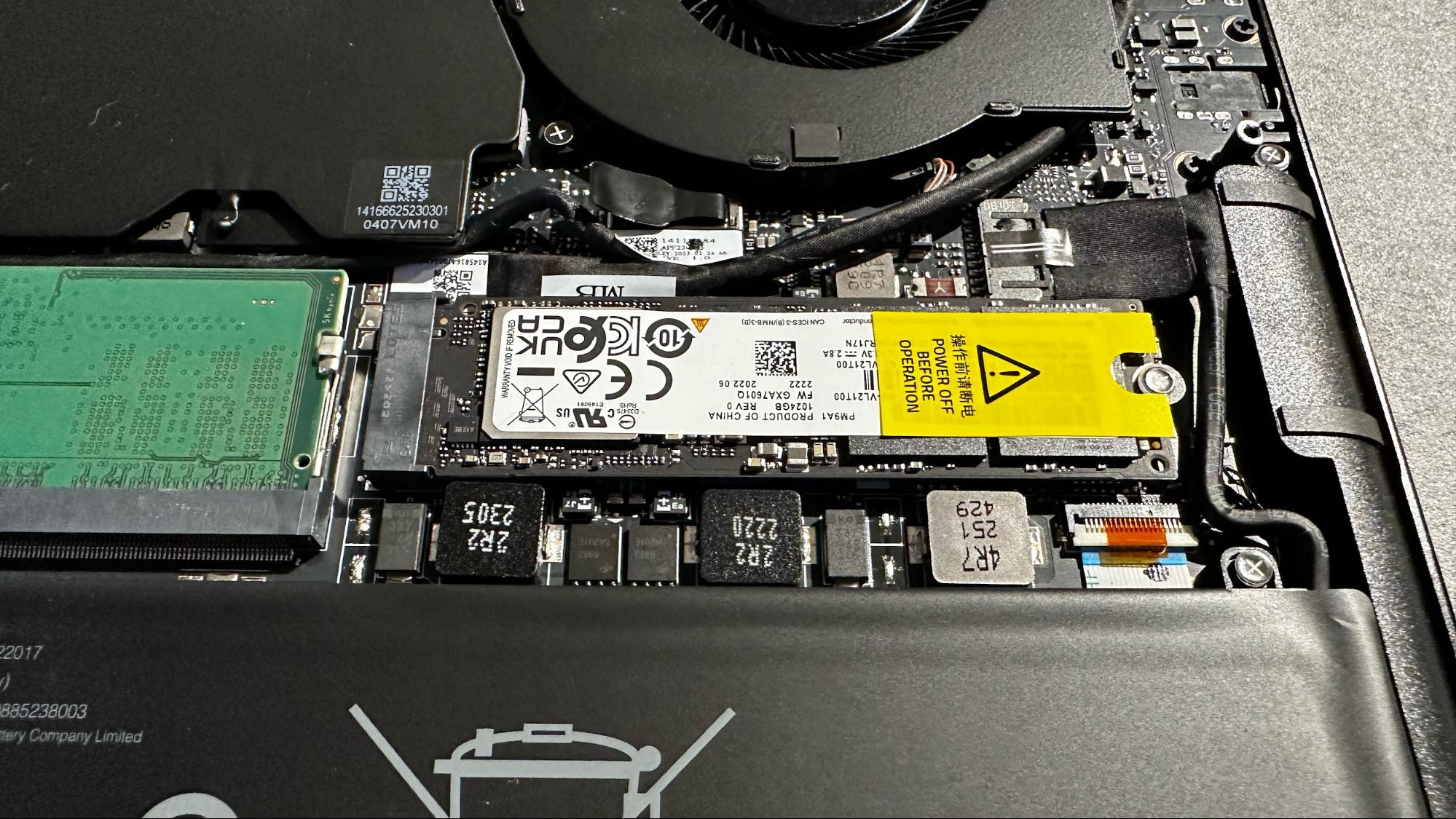
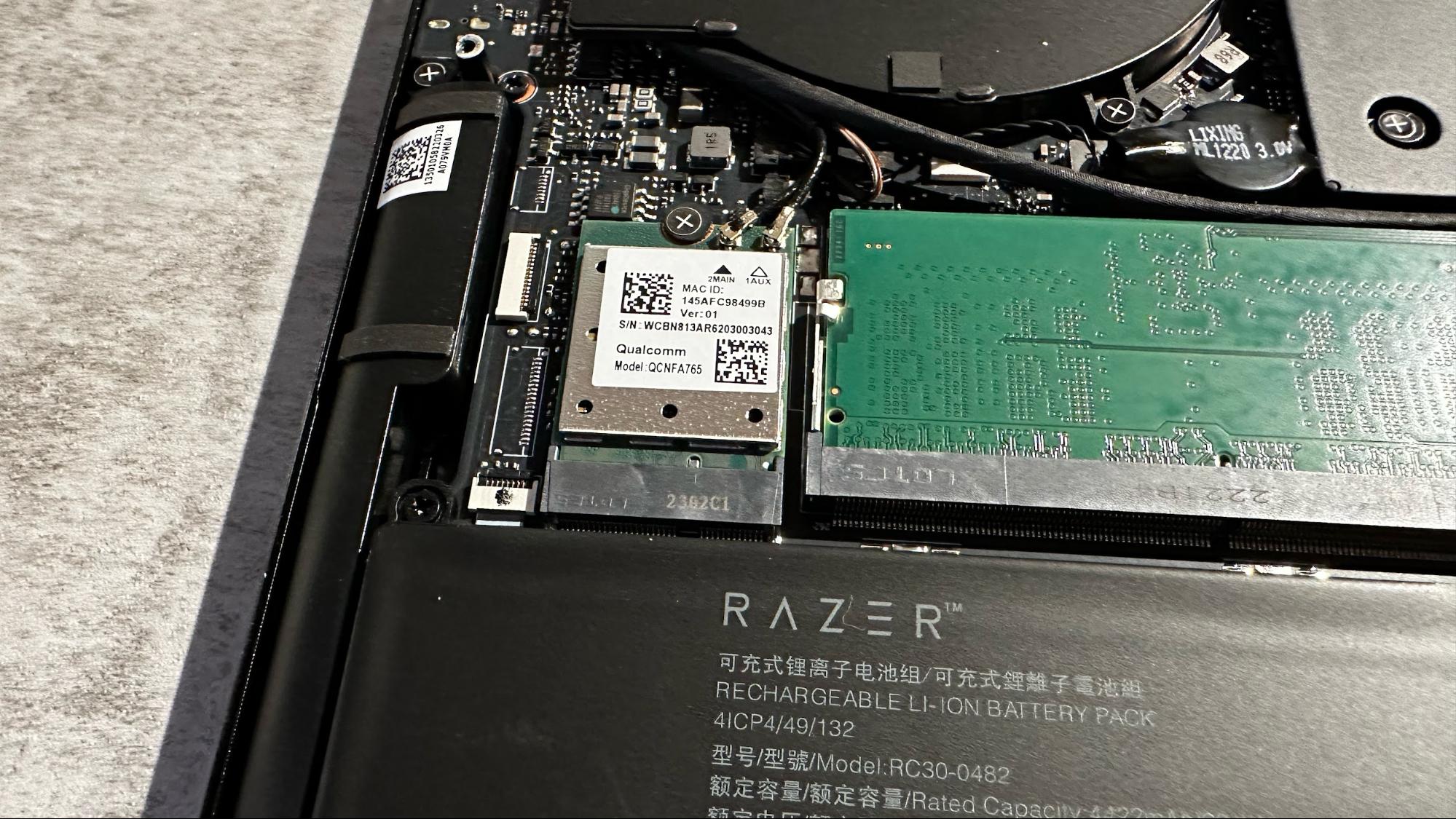
Once removed, you have direct access to the battery, Wi-Fi/Bluetooth combo card and the SSD. The two SO-DIMM slots (both occupied with 8GB DDR5-5600 modules on our review unit) are “hidden” behind an easily-removed plastic shield. This is a big upgrade over previous Blade 14 models, which had their memory soldered onto the motherboard.
Battery Life on the Razer Blade 14
When it comes to endurance, the Blade 14 is a strong contender. The laptop lasted eight hours and 34 minutes on a charge during our battery life test consisting of web browsing, light graphics work and video streaming while connected to Wi-Fi with display brightness set at 150 nits. This was just slightly behind the ROG Strix G16, which lasted 15 minutes longer.
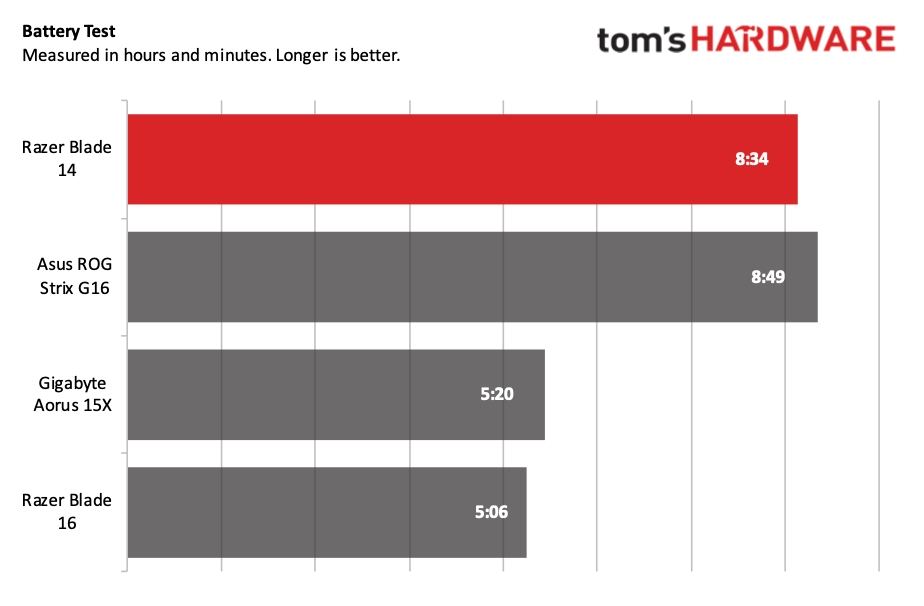
The Aorus 15X and Blade 16 weren’t in contention, as they lasted just 5:20 and 5:06, respectively.
Heat on the Razer Blade 14
Razer packs in a Ryzen 9 7940HS and RTX 4070 into a very compact chassis. That means the dual-fan cooling system has its work cut out to keep system temperatures in check. When running any game, the fans spin up to maximum RPM, which is very loud to my ears. Wearing noise-canceling headphones was the only way to escape the constant drone of the fans in the background.
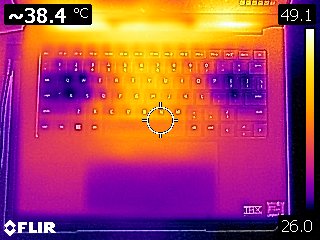

We measured 30 degrees Celsius (86 degrees Fahrenheit) on the touchpad and 42.22 degrees C (108 degrees F) between the G and H keys during the Metro Exodus stress test. The hottest spot on the underside of the chassis was 50.83 degrees C (123.5 degrees F).
Webcam on the Razer Blade 14
Like most new laptops that are hitting the market these days, Razer outfitted the Blade 14 with a 1080p webcam. Razer includes a handy, physical privacy shutter to block unwanted eyes from spying on you. And to make it completely obvious that the shutter is enabled, a little painted red circle is visible when the lens is covered.
While the image quality is a step up from the old 720p unit we reviewed in the 2021 Blade 14, it’s not quite a match for the best 1080p webcams we reviewed in recent notebooks. Images still look a tad grainy despite the sensor upgrade, and the colors look a bit “off” to my eyes. For example, my salmon-colored shirt appeared more like a pale pink.
The webcam is fine for Google Meet or Zoom meetings, but we’d suggest trying out one of the best webcams if you want better quality.
Software and Warranty on the Razer Blade 14
Razer keeps the number of factory-installed apps to a minimum with the Blade 14. Razer Synapse is included for access lighting for the keyboard and logo on the lid as well as customizing macros. Some people find Synapse objectionable, especially when it comes to adding new peripherals to a system, but it worked without issue on our review unit. I use a Razer Atheris wireless mouse when testing laptops, and Synapse greeted the mouse with open arms when I first plugged in its USB dongle.
The only other notable additions are the Realtek Audio Console and THX Spatial Audio for fine-tuning the equalizer and overall sound output.
Given that the Blade 14 comes with Windows 11 Home installed, you’ll also have to contend with the plethora of shortcuts that come with the operating system, including Spotify, ESPN and TikTok (among others).
The Blade 14 comes with a 1-year limited warranty for the laptop and a 2-year warranty for the battery.
Razer Blade 14 Configurations
The Razer Blade 14 comes in three primary configurations. The base Blade 14 SKU with a Ryzen 9 7940HS processor, 16GB of DDR5-5600 memory and an RTX 4060 costs $2,399. Upgrading to the RTX 4070 takes the price to $2,699 – this is the configuration of our review unit. Finally, the flagship SKU with the RTX 4070 and 32GB of DDR5-5600 costs $2,799.
The Blade 14 is currently available to purchase directly from Razer’s website.
Bottom Line
The Razer Blade 14 represents a nice year-over-year bump compared to its predecessor. The switch from a 165Hz QHD to 240Hz QHD+ panel brings a noticeable increase in refresh rate and extra vertical real estate for productivity apps.
We should also note that while previous Blade 14 laptops didn’t allow you to upgrade the memory, the new model is expandable to 64GB of DDR5-5600 via two SO-DIMM slots. Gaming performance was strong across the board, and it was within a few percentage points of the top performers in nearly every game benchmark. Productivity performance came up a bit short in Geekbench and the file transfer test, but it offered solid numbers in our Handbrake encoding test. We also must commend Razer on the display, which not only received a bump in resolution but offers superior brightness and color performance compared to its predecessor.
However, the Blade 14 has two major points against it, one of which can be mitigated. The fans are obnoxiously loud and distracting while gaming, but you can throw on a pair of headphones to alleviate this. One thing that you can’t change, though, is the price. The Blade 14, as tested, costs $2,699. That’s a lot of money to spend for a gaming laptop, especially one that “only” has 16GB of memory and an RTX 4070. The fact that Razer was able to cram this hardware into a device this small accounts for that price premium, but if you’re willing to sacrifice an extra pound of weight, you can get a lot more bang for your buck. For example, the Gigabyte Aorus 15X largely matches the Blade 14 in performance and costs $2,099. We saw the same kind of extreme price difference among competitors with the Razer Blade 16.
But if excellent performance in the most compact frame is your ultimate goal and you demand AMD's latest processors, there isn’t much else out there like the Razer Blade 14. You just have to be willing to pay up for the privilege.







